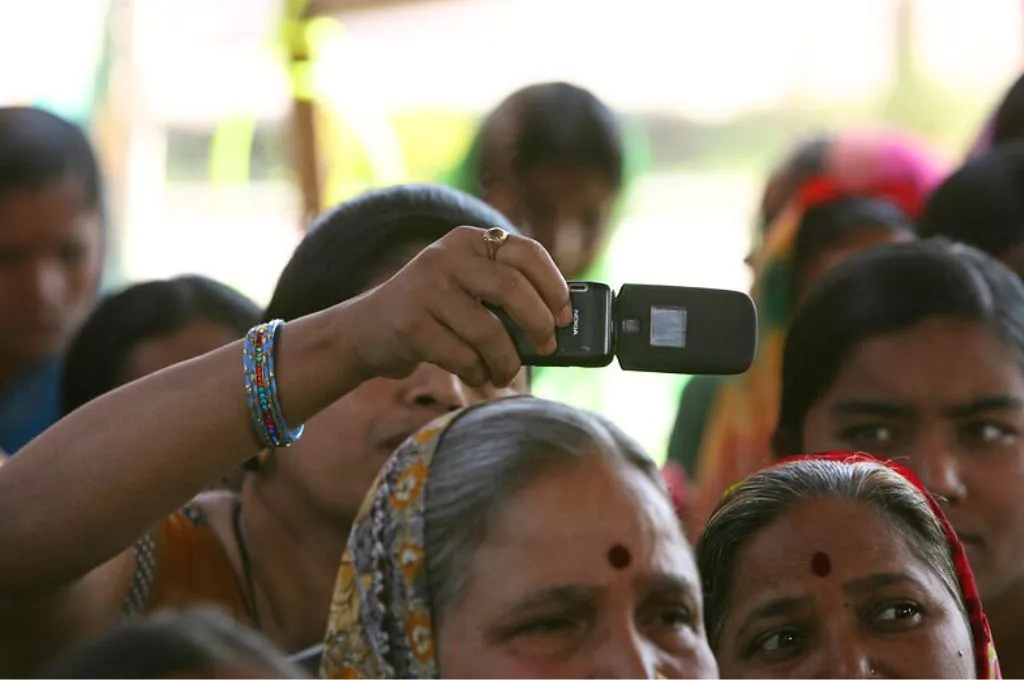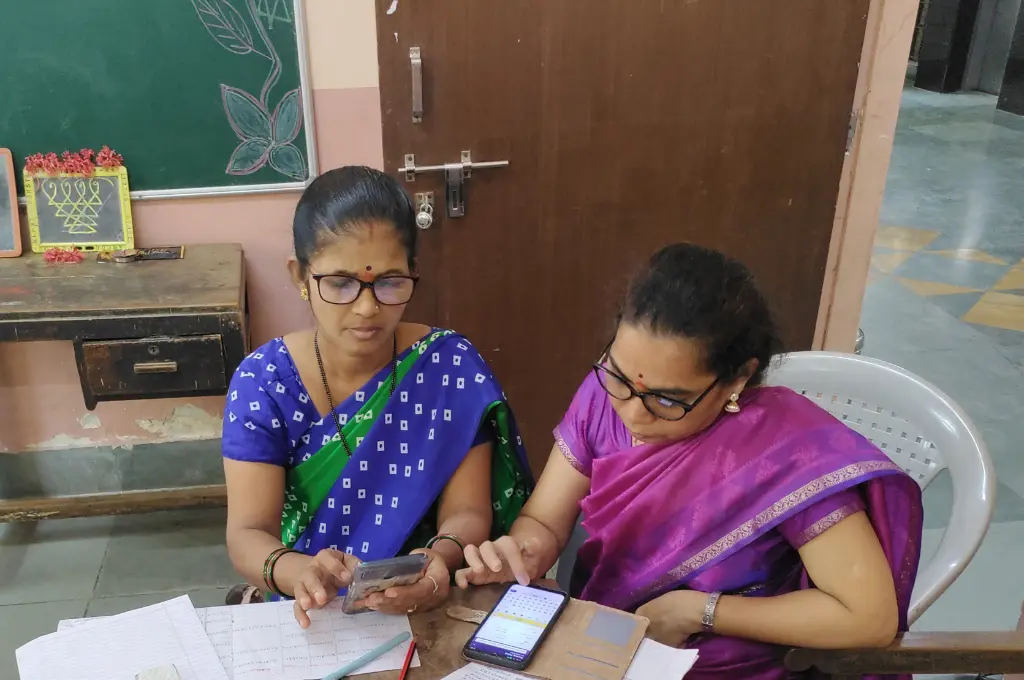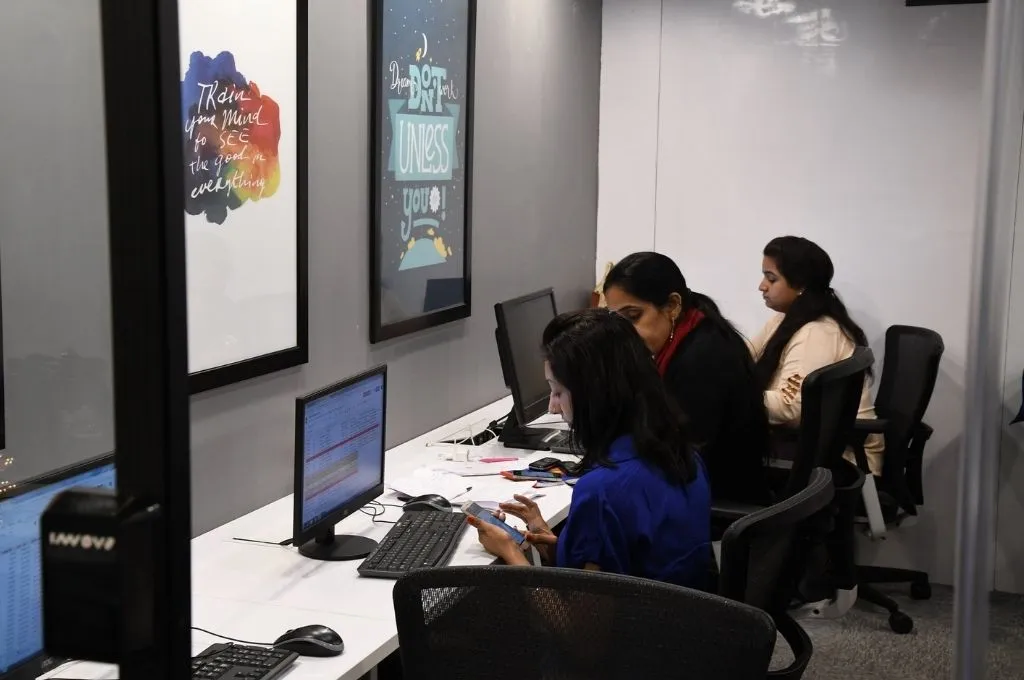Between 2016 and 2022, India’s internet penetration almost doubled, rising from 28 percent to 49 percent. At the same time, technology-related risks have also skyrocketed, manifesting as exclusion from an increasingly digital society and potential digital harms. Such risks especially disadvantage lower-income households by either limiting their access to the digital world or increasing their vulnerability, as they are ill-equipped to deal with them. For instance, as more government benefits and services move online, a digitally excluded household might find it harder to avail of them. Similarly, the risk of online fraud, harassment, or data loss may deter online participation.
There is, therefore, an urgent need to build a safe and inclusive digital society where people can reap the benefits of technology while being shielded from risks.
While there has been considerable focus on ‘technology for good’, or leveraging technology to enhance access to employment and services, the recognition of and focus on mitigating its harms, or responsible technology, has been lagging. Responsible technology refers to technology that works in the best interests of people and the planet, is cognisant of its negative impacts, and actively works to mitigate and reduce risks and harm.
Understanding, prioritising, and addressing tech-related concerns can help expand digital access in a safe and empowered way.
As part of the Digital Society initiative, Omidyar Network India has been investing in the development of a thriving responsible technology ecosystem. This article draws on a report titled Responsible Technology in a Digital Society, which reviews how the sector has evolved over the last six years, highlights key enablers of progress, and identifies opportunities for funders and entrepreneurs to drive the sector forward.
A useful framework for responsible technology is mapping the benefits and risks faced by individuals across three broad spheres of societal interaction—within their communities, within markets, and in relation to the government. In the community space, there have been several benefits, including greater access to information, connectedness, and avenues for self-expression. However, risks such as misinformation, fake news, online harassment, and cyberbullying have also emerged. In the market sphere, tech has driven affordable and personalised products and services as well as access to livelihoods. In parallel, there have been rising risks ranging from data misuse and breaches to monopolisation and market concentration. With respect to the government, tech has enabled digitised access to welfare schemes and improved safety and law enforcement. However, challenges in this sphere can surface as risks of surveillance and exclusion from digitally delivered schemes.
What can philanthropists do?
Philanthropic capital can play a catalytic and risk-taking role in advancing responsible technology in various sectors of India’s digital ecosystem. The Responsible Tech report by Omidyar Network India and Sattva Consulting assigns five different development stages that the various sectors of the tech ecosystem are in. These are ‘latent’, ‘nascent’, ‘emerging’, ‘mainstream’, and ‘transformed’. At the ‘latent’ stage there is a broad lack of awareness of risks. With improved understanding and better solutions, the sector gradually moves into the ‘mainstream’ stage, which is characterised by better legal consensus on risks among stakeholders as well as larger agreement on effective solutions that can be deployed at scale. The final stage is ‘transformed’, which means that a solution system leading to total elimination of the issue has emerged.
Within the sector, different strands of work may progress at different speeds, calling for calibration of both the quantum and the type of philanthropic support that would be useful.
Over the last six years, the Indian ecosystem and its response to technology risks has evolved considerably. There are, however, areas of work that have seen less progress or that are at a more critical stage at this point of time. The report suggests ways in which philanthropic support can mitigate some of these issues. These include:
1. Prioritising implementation of solutions to online harassment
As internet connectivity increases, there is scope for the replication of age-old offline biases. For instance, 58 percent of women in the Asia Pacific have faced some form of online harassment. There has also been a 94 percent increase in cases of cybercrime from 2018 to 2021.
In the last few years, attention to online harassment, especially of people from marginalised communities, has increased. According to the report, mitigation of online harassment in India is in the ‘mainstream’ stage, meaning that there is wide consensus on the risks among stakeholders as well as strong and concerted attempts at a solution. However, the report highlights that a single mainstream solution is yet to emerge.
This is a gap that philanthropists can fill. They can support the implementation of existing solutions at scale, and fund research and proof-of-concept technologies that enable users to identify harassment more easily. Philanthropists can also help create a shared regulatory vocabulary so that issues such as online misogyny and harassment can be identified, ultimately improving complaint redressal processes.

2. Creating awareness on misinformation
Over the past decade, misinformation and fake news have frequently made global headlines. During COVID-19, for instance, false information about the virus and vaccinations spread across social media, endangering public health.
The report highlights that while there has been increasing awareness on this issue, especially since 2020, this awareness is limited to technocrats and small sections of the population. Solutions are still in the ‘emerging’ stage. And while apps such as Meta’s Instagram have fact-checking frameworks, there is no legal consensus on definitions and approaches to resolve this issue.
Philanthropists can help build awareness and introduce behaviour change initiatives. Mass awareness is important, and to this end, funders can support initiatives working towards building an understanding of misinformation as well as identifying it in local vocabularies and languages.
3. Developing solutions to exclusion caused by digitised service delivery
The passing of the Aadhaar Act 2018 introduced the digital delivery of welfare schemes. However, a significant issue that emerged with this digitisation was the exclusion of marginalised individuals, including those who need welfare schemes the most, due to lack of access and necessary digital identity or authorisations.
In the past few years, the response to issues that digital identity create has evolved from emergent to mainstream stage. Best practises and grievance redressals are being developed. Philanthropists can play a key role here.
Philanthropists can partner with grassroots organisations to understand the challenges related to exclusion and fund solutions to address them. They can also support the development of best-practice narratives on digital IDs, building policymakers’ capacity to create user-friendly and efficient digital identification systems in the future.
4. Building repositories to understand surveillance
As technologies such as GPS tracing, facial recognition, and contact tracing grow at a monumental rate, the absence of adequate regulatory systems could potentially expose individuals to surveillance by both the private and public sectors. Facial recognition, for instance, is used in Aadhaar authentication, KYC verifications, and voter identification. But without adequate measures on standards, people are exposed to several risks.
Mitigation of surveillance-related issues in India is at a nascent stage. This means that while there is an understanding of the associated risks, this knowledge is only limited to experts and no solutions exist. Therefore, it is crucial that the understanding of these risks trickle down to other stakeholders in the ecosystem.
In this space, philanthropists can finance research that highlights the risks of tech such as facial recognition and then disseminate it among policymakers. Additionally, funders can help create a repository that can be used as a reference guide before these technologies are introduced in Indian law. They can also fund fellowships to increase awareness among practitioners.
5. Supporting tech that focuses on increasing data privacy
Many businesses collect customer data to enhance personalisation, but this also puts users at risk of their data being misused by third parties. In India, awareness of data privacy is growing—as evidenced by the passing of the Digital Personal Data Protection (DPDP) Act in 2023—and solutions are gradually being mainstreamed. However, as AI and Internet of Things continue to expand, data privacy risks have multiplied significantly and are only expected to increase.
Philanthropists can support the creation of a nationwide dataset of consumer perceptions and needs. Such a resource could identify gaps in data privacy awareness and solutions. This will enable the ecosystem to better understand the issue and improve the transparency and accountability of current solutions. Developing skilling courses or certifications that focus on incorporating privacy during the programming stage is also an avenue that funders can explore.
Another course of action is to fund open-source technologies focusing on minimising data shared with businesses. For example, these could include tools that masks personally identifiable information (PII) when processing consumer data.
These are some key interventions—in addition to others pertaining to online fraud, mental health and social media, gig workers, and market monopoly—that can help create safer and more empowered digital lives, allowing every individual to access the full range of technology’s benefits.
Shilpa Kumar contributed to this article.
—
Know more
- Read the full report by Omidyar Network India.
- Learn more about digital public infrastructure in India.
- Read this article about how an algorithm denied ration to thousands.





